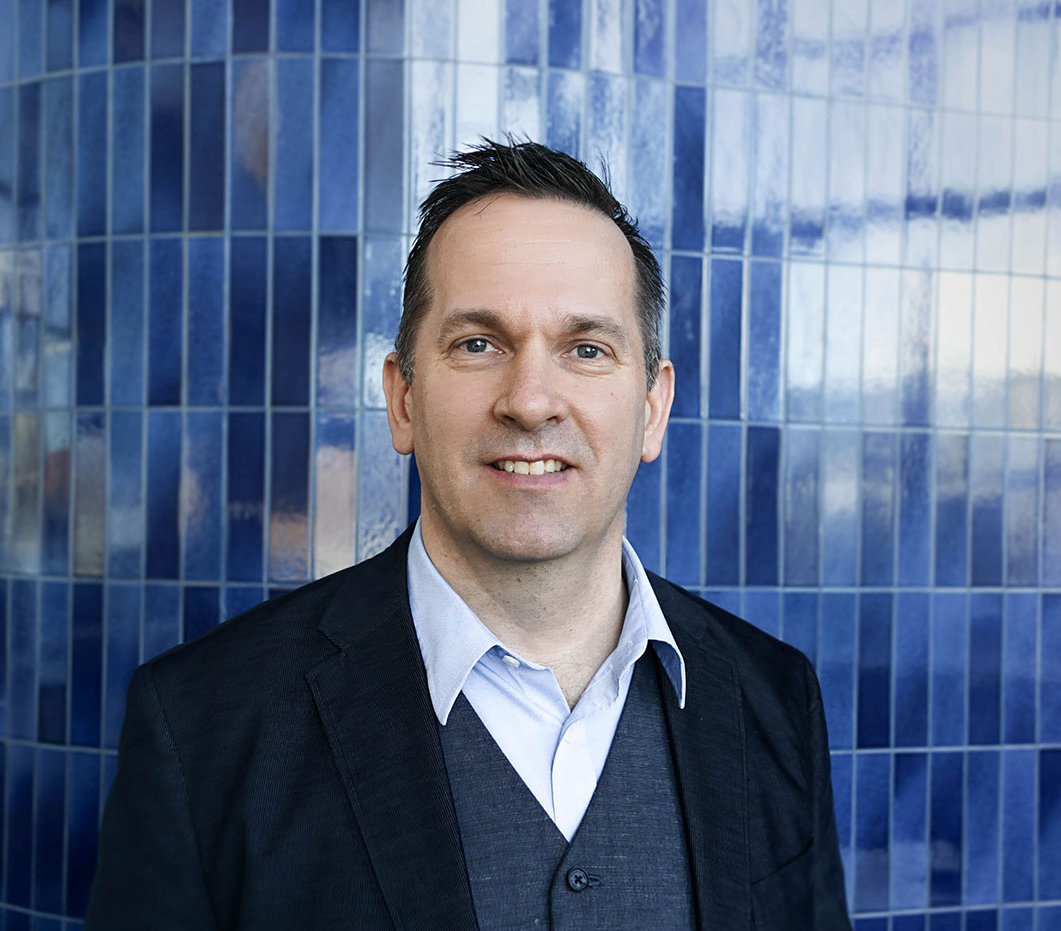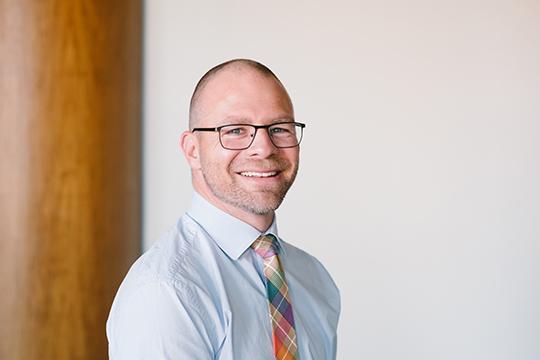Counting All the Costs of School Closures
By Milton Friesen
In a letter to the Ministry of Education in February of this year, Toronto Mayor John Tory waded into the current debate over what to do with underutilized school buildings and properties. Tory's basic message: There's more complexity and nuance here than might be evidenced in the polarizing rhetoric that pits opposing factions against one another. And in this context, there are also important clues in his letter about relational dynamics between cities and school boards, dynamics that apply well beyond Toronto.
First, there is the obvious (but important) point that our communities change over time. A given area may very well have fewer children today than it did 40 years ago for any number of reasons. The future does not quite repeat itself, but the number of schoolage children moves in both directions, meaning that school boards must attend to the distribution problem both geographically and temporally — more or less school-age children today than yesterday and more or less of them in any given area. Flexibility as a response to change is essential if the value of longterm institutions such as school systems is to persist.
Adaptation tests the social and institutional structures that make entities such as schools function. If demand for public school services decreases, for example, what other public needs might be emerging for which the public assets of the schools could be a timely solution? Usually, systems only see the thing they are designed for — in this case, school-age children. Is there, however, sufficient flexibility, openness and innovation to connect declining school demand with an increasing demand for adult education, social activity among an aging population or other neighbourhood need?
Adaptation also includes the physical assets — the buildings, land and spaces that have been designed for schools. Adaptive reuse capacity and creativity are growing all the time, and our understanding of the total value of a school property — civic, aesthetic, cultural and natural — is good reason to consider what the range of alternatives is for those public assets. Do we know, for example, what the social or public good return on investment is for a repurposed school property and building? We can do a market assessment, but there may be hidden factors we would do well to attend to — some of these are considered below. Are we building new schools with this kind of adaptability considered at the front end? History suggests we might want to consider it.
Second, there is the difficulty of predicting the future. If current attendance levels are making 60 Toronto schools operationally inefficient, how would that change if Toronto's hoped-for increases in density and walkability are realized? What if the aspirations of less sprawl and greater intensification are met? If schools are lost through closure and then a decade later families move back into areas that were abandoned a generation earlier, will our need for schools come back around? Birth rates and immigration are also important trends to watch in this regard. We know the future is coming, but prediction continues to be a humbling craft.
Third, John Tory's letter clearly identifies a public institutional problem. The same citizens are supporting both the city and the school board, both of which are there to attend to our common good. What ends up happening, however, is that through organizational design and legislation, they have been allowed to operate as mutually exclusive institutions. Mayor Tory has to pen a letter full of bowing and scraping, affirming the power of the Toronto District School Board. He must ask, without any real leverage, for an invitation to their deliberations and processes, carefully and deferentially reiterating that he has no jurisdiction, that there is no official role, but that he really thinks it's an important city issue. He's right. It is a significant city and public good issue. Schools are fully enmeshed in the total infrastructure of cities — both social and physical — and yet cities have been left to busy themselves with collecting the taxes for the school boards and making themselves scarce when the real deliberations are under way. Cities, not school boards, will be left to deal with neighbourhoods where school closures reduce quality of life.
Fourth, full cost mechanisms are lacking and must be introduced through legislation. For example, amalgamation makes sense from an operational standpoint — one large facility is less expensive than five smaller facilities. This is usually the argument that drives board decisions. Socially, the value is not there. Students may have more options in large schools, but they suffer from living farther away, having weaker social ties, less access to extracurricular programs, and a decreased sense of belonging. The costs of these losses are not calculated into facility efficiency calculations — they just don't show up. Amalgamations kill walkability, increase car dependency, create new traffic problems and lower the institutional diversity of the neighbourhoods where schools are closed. Price tag? No one bothers to tally that, least of all the school boards.
If megaschools mean higher dropout rates, lower levels of school involvement, weaker neighbourhood social ties and a host of car-associated environmental and human health costs, then the issues for cities become directly financial. How much does it cost a community if policing and health costs go up as a result of lower social ties, increased criminality, and lower levels of health? If you're a school board, you don't care because those costs live outside of your system. You save on your operational costs at the expense of the common good and pass those costs on to systems that you don't have to answer to.
City governments are not inherently better at public good governance than school boards, but they have a wider commitment to more aspects of our flourishing than a school board does. While Mayor Tory must beg for an invitation to the party, I think he could do better. He needs to consider how the assessment of the full cost of closing a school can be measured, counted in a way that makes that measurement matter to the citizens. School boards could be required to complete social impact and long-term community impact assessments. They will not become less myopic on their own and will change institutional approaches only if the frameworks they function in are changed. Mayor Tory might well look for ways to provide that kind of citizen-driven leverage. Another structural change that could be considered would be for the City to take care of facilities and properties — with corresponding tax adjustments to match — while the school board looks after their educational mission.
Don't Start with the System
By Beth Green
The Toronto District School Board says that one in five schools are "underutilized," but utility is the wrong place to start when we talk about what a school is. And people know this; it's why there has been an outcry from the neighbourhoods of the 60 schools slated for closure. They know that a school is more than just a building and a timetable. It's more than just something "utilized." They understand what they will lose if the school disappears from their community.
Local neighbourhoods don't start with the system when they think about what a school is. Rather, they start by thinking about the people. They know who the students are. They see them as they walk to school. They are on first-name terms with the crossing guard. They use the classrooms after hours for community groups. And they remember those teachers who taught several generations of their family.
Yet Ontario is one of the few provinces that seems to view its education policy first and foremost through the lens of government bureaucracy and then, second, through the lens of boards and teachers and, finally, begins to consider the learner and his or her family. Other provinces reveal a different approach. For instance, Saskatchewan has recently followed British Columbia's lead by opening up funding to independent schools so that families can exercise greater choice. Families now can choose a school in line with their religious belief. In doing so, both these provinces have recognized that the definition of public education is not necessarily synonymous with government schools.
Toronto persists in this narrow definition of the "public" school despite the fact that 30 years ago the Shapiro Commission on private education acknowledged that while provincial government has a responsibility to fund public education, this does not necessarily mean that government has to be the provider. By making such cuts, the TDSB will lag behind much of the rest of Canada and is at risk of losing what should be a national treasure: high quality, genuinely diverse, neighbourhood schools.
Starting with people when we talk about a school shifts our perspective to good teaching and learning not simply good accounting and efficiencies. Schools such as those on the TDSB list with falling enrolments are stuck at the centre of heavily bureaucratic systems and are typically behind the curve when it comes to global trends in teaching and learning. This accelerates their demise as parents who are able to move out of an area will vote with their feet and relocate. Families without the social and economic means to exercise choice end up stuck with a school caught in a spiral of low morale, traditional teaching methods and antiquated buildings — all of which are very expensive to maintain.
The consensus is that graduates of the future will need key skills, a strong moral compass and the aptitude to apply knowledge in a range of contexts, some of which we probably have not imagined yet. New pedagogies that are already facilitated by technical innovation include "blended learning," which combines traditional face-to-face instruction with online learning; "flipped classrooms," wherein students can prepare content by watching videos at home and then problem solve in group settings at school; or "learning labs" that facilitate technological collaboration. These approaches will need to be situated within very different school systems. And it is interesting that they are predominantly being experimented with in the developing world, where heavily bureaucratic systems of education are seen as part of the problem not the solution.
We also need to stop pretending the system isn't broken. It is broken, and it is not serving us well. While shutting down one in five schools might save money, it greatly impoverishes the community, the city, the province and even the nation. Rather than shutting down schools, good systems should be finding innovative ways to increase school choice in and out of the public system. Opening up education to a greater diversity of providers would allow for much more flexible spending and far more innovative approaches to teaching and learning that are genuinely responsive to people and their needs.
One of the conundrums that the TDSB must solve is how to keep investing in the next generation without pouring good money after bad. What if other providers were willing to step in and help to run a genuinely local neighbourhood school? Old-fashioned public schools are expensive, and many of us have had the experience of teaching or learning in leaky, crumbling buildings no longer fit for their intended purpose.
This conundrum is partly of the TDSB's own making because they have stuck with the model of utility. Utilitarian models give rise to two of the crises playing out for the 60 neighbourhoods at risk of losing their schools: first the crisis of urban education and second the crisis of education spending. Forty per cent of the schools at risk are in areas of high socio-economic need, so students in some of the city's most vulnerable communities will have to travel farther.
If she but realized it, Ontario's Education Minister Liz Sandal has already proposed the answer. CBC quotes Sandal as saying that in the event of a closure, one of the other three school systems in Toronto will have "first dibs" on the school. The answer is not to keep open utilitarian public schools; the answer is to open up the system to greater diversity. Neighbourhood public schools of the future should not look like public schools of the past.
Monochromatic Labour, Kaleidoscopic Students
By Brian Dijkema
The Toronto District School Board comprises 560 schools that are attended by almost 290,000 students. In a school board that size, you would expect to find tremendous diversity. And your expectations would be met the instant you walked into a classroom. The TDSB is a kaleidoscope of students. On any given day, Canadians of Jamaican, Indian, Chinese, Nigerian, Portuguese, Polish, Croatian and a host of other descents are taught math, English, trades, literature and art.
But if a pencil sharpener breaks in the classroom or if a plug shorts in the lab, the school board is allowed to call on workers from only one union.
And once every three years, the wide variety of students must sit and ask if this is the year that their report cards will not be filled out due to labour action undertaken by the sole bargaining agent of the teachers or by the school board.
The very real ethnic diversity of the students and their teachers stands at odds with the monochromatic, diversity quashing and disempowering structures that govern labour relations in Toronto.
Let's begin with the strange — and virtually unique in all of Canada — fact that the TDSB is considered a construction employer, just like any private company in Ontario. The TDSB is a major property holder — it has schools all over Toronto in various states of repair. This means that, occasionally, bathrooms need fixing; occasionally, lockers need to be installed. Most school boards have a wide array of contractors that they can call upon when their schools need repairs or alterations. This array of contractors can be drawn from the full diversity of the Ontario construction workforce. The board can choose to work with whichever contractor will provide the best value for its work. Sometimes this means that the workers are unionized with one of the building trade unions in Ontario. Sometimes it means they're affiliated with CLAC, or CUPE. Sometimes it means that the workers are non-union.
In Toronto, however, the boards don't get that choice. They are forced, by an obscure and archaic bit of labour law, to let the jobs out only to workers affiliated with one powerful union, the Maintenance and Skilled Trades Council, which has complete jurisdiction over all TDSB maintenance work, right down to the installation of pencil sharpeners. As the Toronto Star reported last year, the result of this is outrageous costs for construction and maintenance. How outrageous? Well, the union charged $857 to hang three pictures a few years ago. And that is just the tip of the iceberg.
Why does this matter? Well, there are many reasons, but let me spend a moment reflecting on the fact that this is actually a pedagogical matter. What lessons about work, business and the responsible management of public institutions are students learning from crews of workers who take 70 hours and charge $3,007 to replace burnt-out bulbs in a lunchroom? Not good lessons, I assure you.
It's also important to note that, given the limited nature of public funds, the extra money that is spent on such frivolous costs is money that is taken away from the pedagogy of students. Every overpriced light bulb results in fewer books and less money to spend on those with special needs. The banal economics of building maintenance has real consequences for students.
It also means that there is less money to pay teachers. And as anyone who has followed relations between teachers' unions and the school boards in Ontario knows: less money for teachers means a greater chance of strikes and work action.
The reason is that two teachers' unions in Ontario have an effective monopoly over the large labour force that teaches students. And with that monopoly comes incredible bargaining power. And when placed against the real power of the TDSB and, more accurately, the province that funds it, you have an unstoppable force meeting an immoveable object, with young students in between. As Cardus President Michael Van Pelt noted in a recent Globe and Mail article, the results are not pretty:
"Ontario is now the national leader in forcing striking workers back to work with legislation. Each time this happens, students miss school, teachers miss work, and parents are left wondering what, exactly, their tax dollars buy them. Clearly something is wrong."
The answer to these challenges to the TDSB can be found right within the classroom. Ontario would do well to open itself to the same type of diversity that is featured in its student body, and expand what diversity means. Diversity is not simply a matter of language or skin colour. A rich diversity would mean diverse institutions operating from different perspectives, offering different modes of teaching, and open to different perspectives on pedagogy. The results would pull students out of the middle of disputes between powerful oppositional forces and, once again, place them at the centre of our educational system.
And it might even save us some money!







